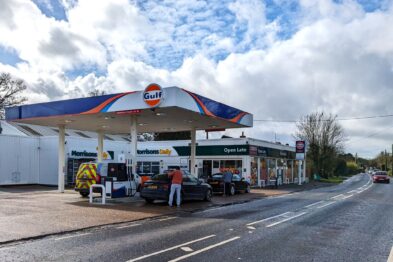Prof. Dr. Carsten Kortum | Till Zehnle
Due to various events, the availability of goods in retail will be increasingly restricted from 2022, with the result that customers cannot find in food retail the products they wish to buy, because those products are sold out, are temporarily delisted or they are, however, on stock but are not replenished on the shelf. This situation, which is also termed Out of Stock (OoS), is researched by the Volume 16 of the Publication Series Retail Management of DHBW Heilbronn by the authors Prof. Dr. Carsten Kortum and Timo Handermann. The study “Customer Reactions to Out of Stock in food retail” shows how for example brand loyalty, age, retail format and product group influence the change to alternate products.
Current causes for Out of Stock are primarily, in addition to issues in connection with purchase orders for goods, inventory management and the replenishment process within a store, tactical delisting of brands / stoppage of deliveries by suppliers due to negotiations for higher prices. In 2022, disrupted supply chains were the dominant cause for Out of stock. Due to the created supply issues and demand fluctuations, customers are now significantly more often confronted than before 2019 with a situation that their preferred product is not available and the habituated shopping is not realizable. In this context the possibility exists, that the customer postpones shopping, buys an alternate product of the same or a competing brand, buys the product at another store or will not buy the product at all.
From this differentiated examination of potential customer reactions arise the following three guiding questions of this study:
- How do customers react to Out of Stock in food retail as regards the various product groups?
- How do the reactions of customers differ at the different retail formats?
- By what are customer reactions influenced?
As a conclusion of this work, it can be said that in the case of a confrontation with Out of Stock, customers prefer, across product groups, to replace the preferred product by a product of an alternate brand. Furthermore, there is a high willingness of customers for a change of store. The highest willingness for a change of store exists with customers of discounters. Differences in customer reactions are also identifiable within the individual product groups, especially in the case of perishable products.
Within the scope of this research work, it was also found that the behavior of customers in connection with Out of Stock is primarily influenced by brand and store loyalty, but that demographic characteristics of customers such as age can also have an influence on customer reactions.
To counter the challenges in the case of preventable shelf gaps, such as e.g., slowed down replenishing processes, shortage of skilled labor or inaccurate forecasting & replenishment, innovative solutions and the application of advanced technologies are needed, as well as the willingness of retailers to utilize these solutions and technologies.
Lacking availability of real-time data from physical retail stores currently severely restricts, however, the scope of application for intelligent systems, which are, among others, also intended for use by associates. For this reason, it is vital that real-time data are collected, aggregated, enriched, and made available and usable for the associate on the floor. Only through useful processing of AI-based data is AI capable to provide an effective added value in physical retail.
These data can be collected in a targeted manner with the support of state-of-the-art, wireless IoT devices and sensors – as they are combined in the Captana solution. Relevant data are analyzed within seconds and are available in real-time as structured data on a high-performance cloud platform for further processing.
The evaluation of the provided data puts associates, store management, supply chain management and other head office units in a position to make data-based decisions to avoid shelf shortages. Ranging from automatically generated reports, data display and export for process control and ‘Out of Shelf Prevention’, individual information can be generated, targeted tasks can be created, and actions can be initiated. The Captana LIVE App on the mobile devices of the associates additionally supports the processes with automatically generated tasks as well as individual tasks and also by Pick and Put to Light. By displaying product availability in real-time, replenishment orders can be supported automatically.
Stores using Captana could demonstrably increase their product availability by 3 percent points within two months. Physical retail’s very existence depends on its associates. For this reason, AI-based data and analyses must be aggregated and made available to the retailers. Captana is considered to be a market leader in the area of retail AI applications.
The study “Customer Reactions to Out of Stock in food retail” is available in print or as a PDF on:
https://handel-dhbw.de/schriftenreihe/monographie/customer-reactions-to-out-of-stock-in-food-retail/
An extract of this study is available as a whitepaper for free download at:
https://handel-dhbw.de/schriftenreihe/whitepaper/kundenreaktionen-auf-out-of-stockim-lebensmitteleinzelhandel-2/
To learn more about Captana, visit the website www.captana.ai.

